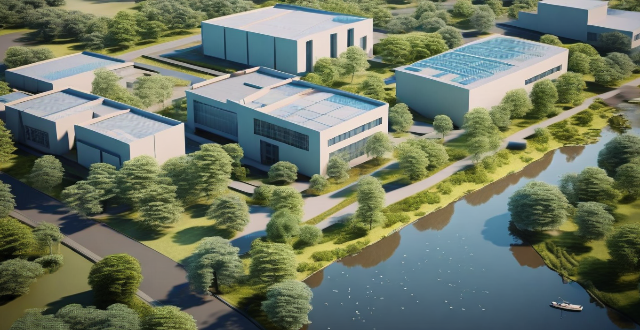Improving the environmental performance of existing buildings involves retrofitting them to reduce energy consumption, carbon emissions, and overall environmental impact. Strategies include upgrading insulation and air sealing, replacing old windows and doors, upgrading HVAC systems, switching to LED lighting, implementing water efficiency measures, using renewable energy sources, and improving waste management through composting and recycling programs. These measures contribute to a more sustainable future by conserving energy, reducing waste, and protecting planetary resources.

Improving the Environmental Performance of Existing Buildings
Introduction
Existing buildings can be retrofitted to improve their environmental performance in a variety of ways. This involves making changes to the building's structure, systems, and operations to reduce its energy consumption, carbon emissions, and overall impact on the environment. Here are some strategies for retrofitting existing buildings:
Energy Efficiency Upgrades
Insulation and Air Sealing
- Add or upgrade insulation: Installing additional insulation in walls, attics, and floors helps to reduce heat loss in winter and heat gain in summer.
- Seal air leaks: Sealing gaps and cracks around windows, doors, and other penetrations through the building envelope prevents drafts and improves energy efficiency.
Windows and Doors
- Replace old windows: Installing high-performance windows with low-emissivity (low-E) coatings and insulated frames reduces heat transfer through the glass.
- Upgrade doors: Replacing old doors with more energy-efficient models, such as those with better weatherstripping and insulation, can improve thermal performance.
Heating, Ventilation, and Air Conditioning (HVAC) Systems
- Upgrade HVAC equipment: Replacing outdated HVAC systems with newer, more efficient models can significantly reduce energy consumption.
- Optimize system controls: Installing programmable thermostats and zone controls allows for more precise temperature regulation, reducing unnecessary heating or cooling.
Lighting
- Switch to LED lighting: Replacing incandescent bulbs with LEDs reduces energy use and maintenance costs since LEDs last longer and use less energy.
- Implement daylighting strategies: Using natural light from windows and skylights during the day reduces the need for artificial lighting.
Water Efficiency
- Install low-flow fixtures: Low-flow showerheads, faucets, and toilets reduce water consumption without sacrificing performance.
- Collect rainwater: Installing rainwater harvesting systems can provide a source of water for non-potable uses like irrigation and flushing toilets.
Renewable Energy Sources
- Solar panels: Installing photovoltaic solar panels on rooftops or carports generates electricity from the sun, reducing reliance on grid electricity.
- Wind turbines: In areas with sufficient wind resources, small wind turbines can supplement a building's power needs.
Waste Management
- Composting: Setting up composting systems for organic waste diverts material from landfills and creates useful soil amendments.
- Recycling programs: Establishing effective recycling programs ensures that materials like paper, plastic, metal, and glass are properly sorted and recycled instead of disposed of as trash.
Conclusion
Retrofitting existing buildings to improve their environmental performance is essential for reducing our collective carbon footprint and moving toward a more sustainable future. By implementing these strategies, we can make significant strides in conserving energy, reducing waste, and protecting our planet's resources.